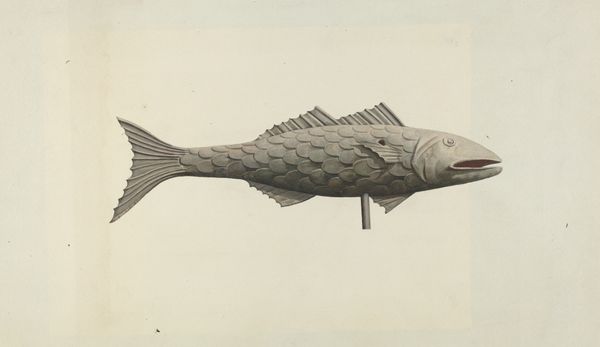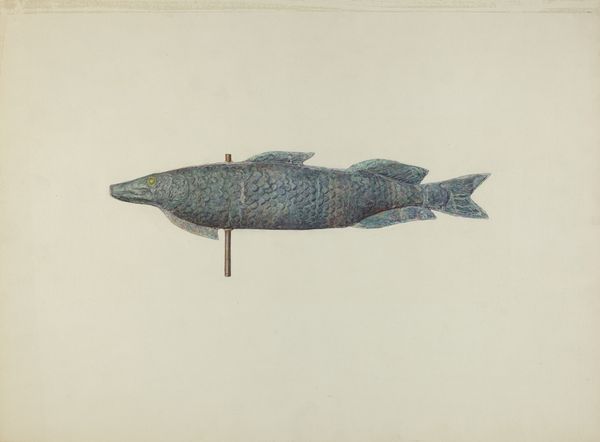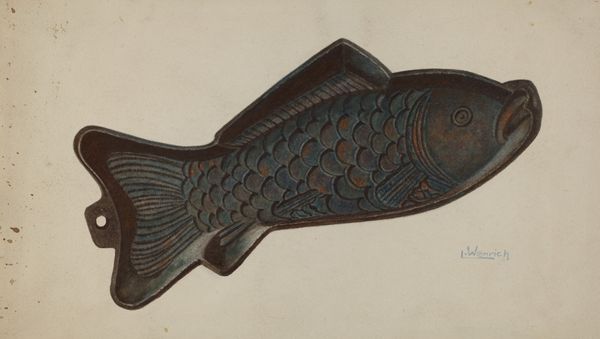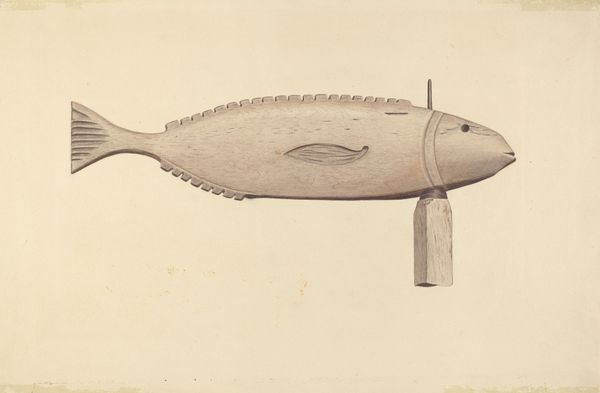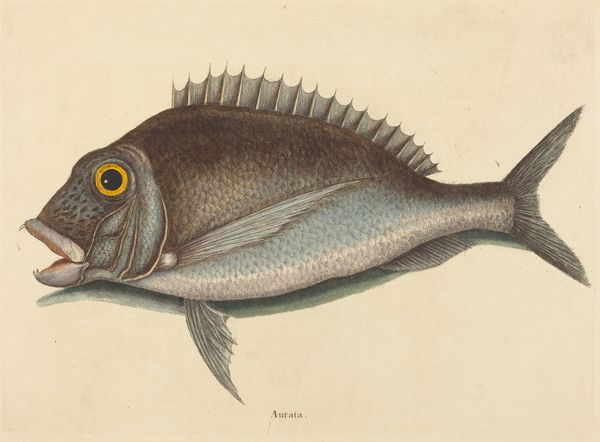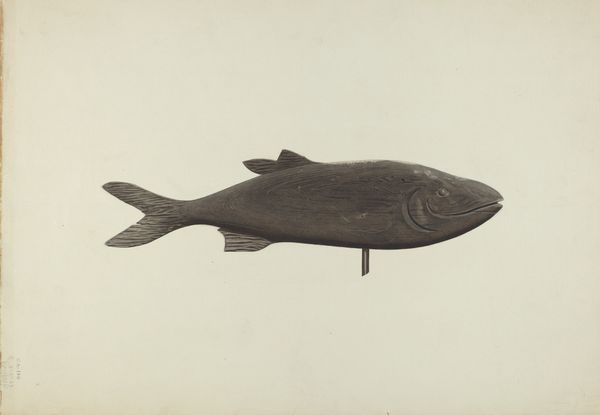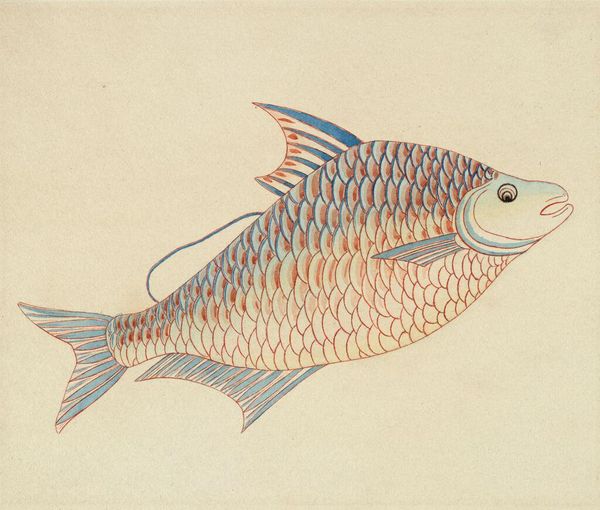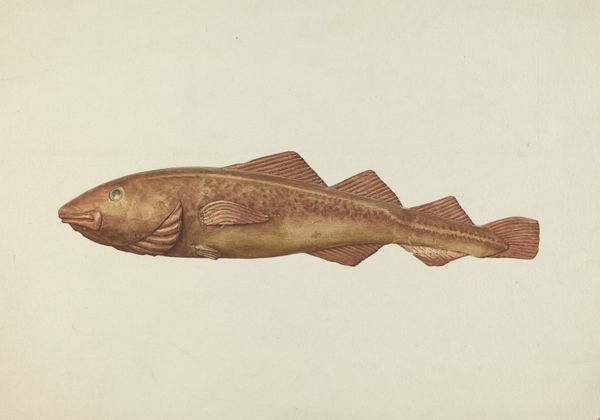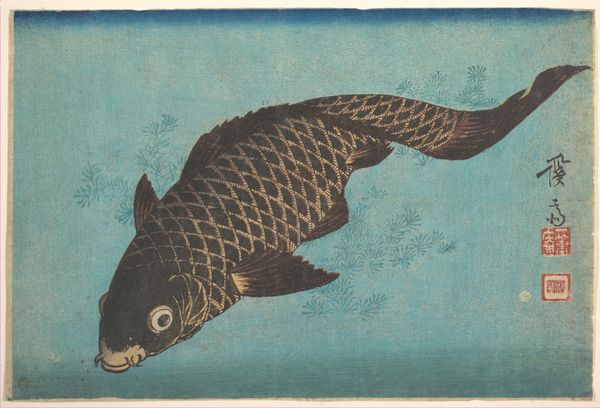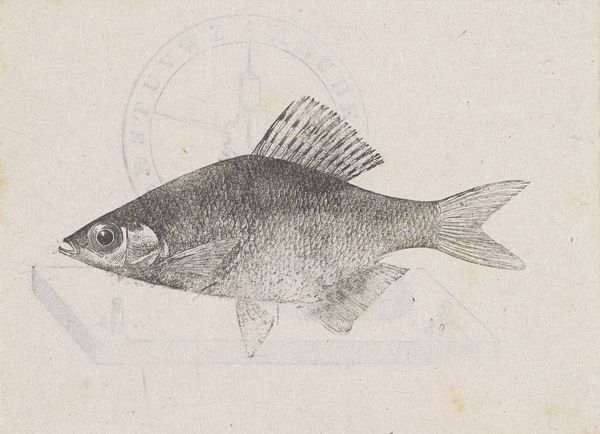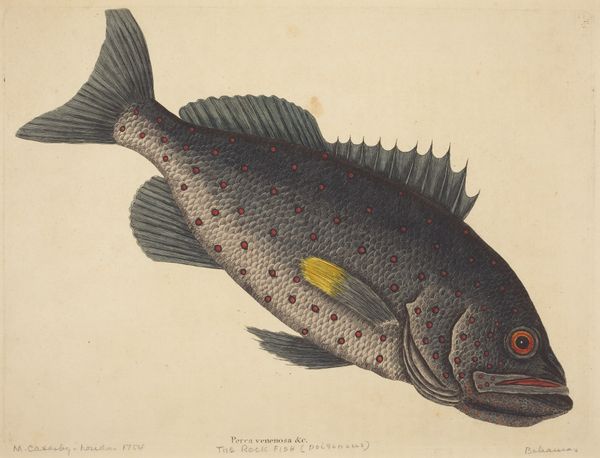
drawing
#
drawing
#
caricature
#
realism
Dimensions: overall: 30.6 x 40.6 cm (12 1/16 x 16 in.)
Copyright: National Gallery of Art: CC0 1.0
Curator: This image, entitled "Weather Vane (Fish)," likely dates between 1935 and 1942. The artist is unknown, but it presents a compelling representation of a functional object. What are your initial thoughts? Editor: It has a charming folksy quality. The slightly cartoonish eye and open mouth give it an almost humorous feel. I wonder about the original scale, the artist has rendered its materiality and details so carefully! Curator: Absolutely. These types of weather vanes were ubiquitous, often adorning barns or public buildings, so perhaps this artist was recording a commonplace object. There’s something interesting about how the design balances between accurate representation and slightly exaggerated features. Editor: The fish is such a loaded symbol, of course. Think about early Christian symbolism, fertility rites in many cultures… Was the selection of a fish purely utilitarian for a fishing town, perhaps, or was there something more intentional at play? Curator: It's tough to say definitively without more context. While localized economies or geographies definitely shaped art in those periods, the visual language and symbolic connotations travel more widely. The question for me then is how artistic intention, or authorial voice, comes across in these functional objects. What do we consider the ‘artist’ to be responding to in their practice? Editor: That's true. Fish do feature prominently in local lore or industry but on top of it, they represent abundance, guidance... It adds layers to something that appears initially quite simple. What is interesting, of course, is that while a ‘Weather Vane’ would provide tangible information (wind, storms, temperature changes), it still draws us to reflect on cultural memory in relation to the environment. Curator: Agreed, thinking about weather vanes prompts reflection about public art, its purposes, and its interplay with societal trends in early twentieth-century America. Editor: Seeing through both these historical and symbolic lenses, the artwork, or the *documentation* of it, transforms what might appear mundane to offer enduring cultural meaning, doesn't it?
Comments
No comments
Be the first to comment and join the conversation on the ultimate creative platform.
